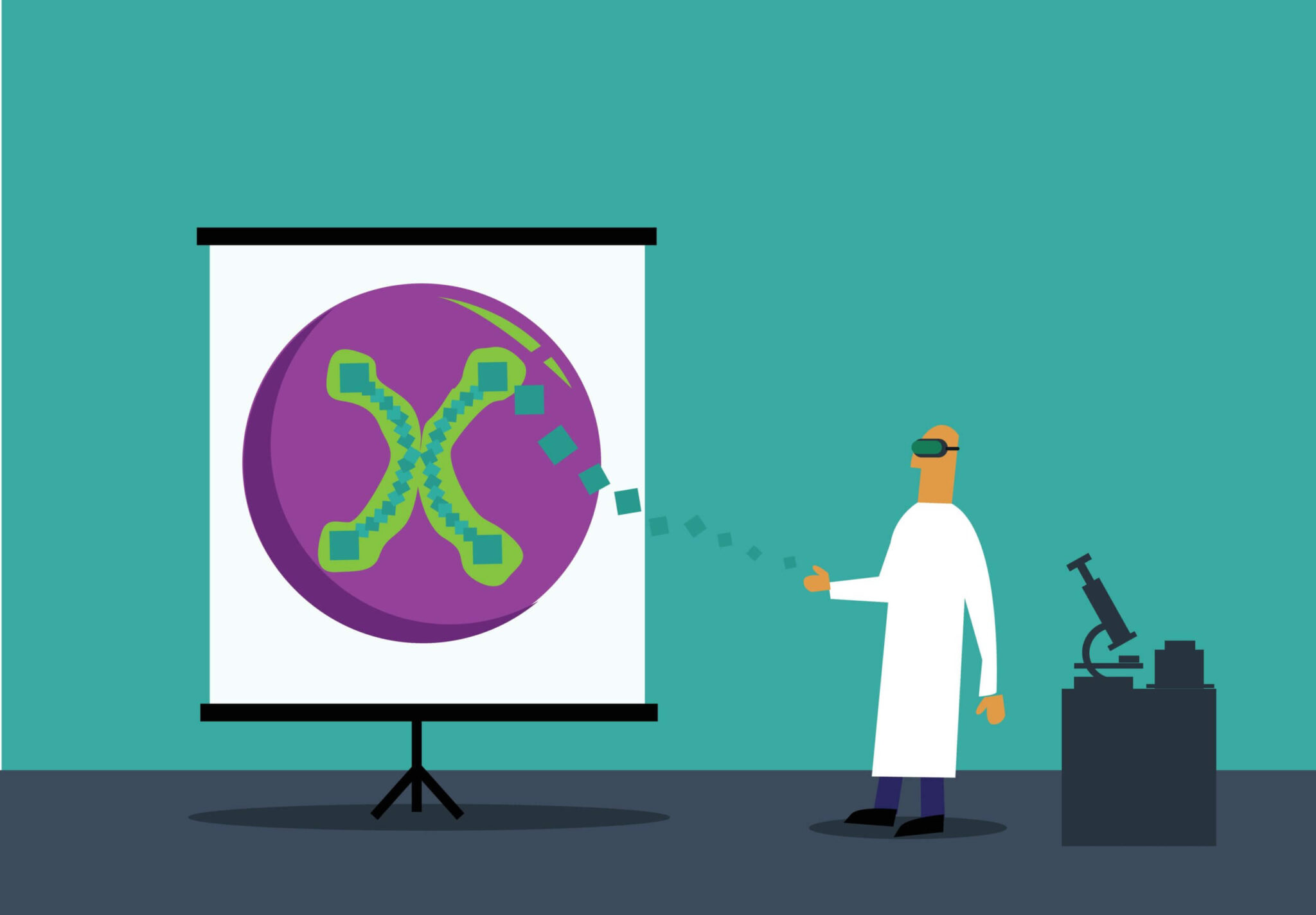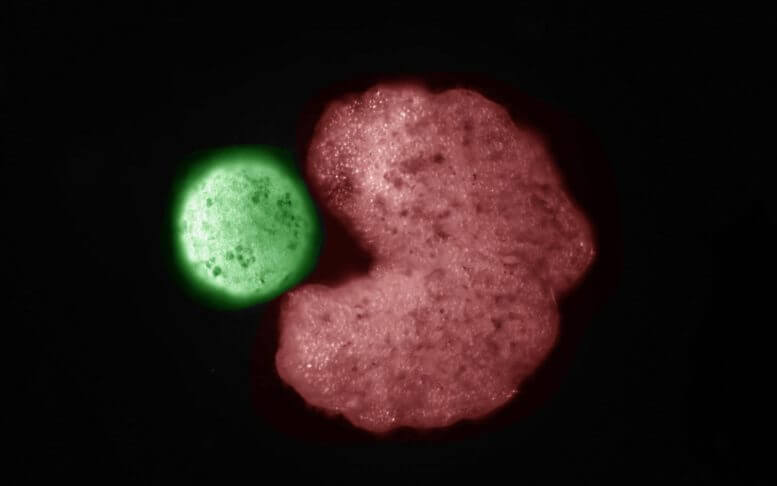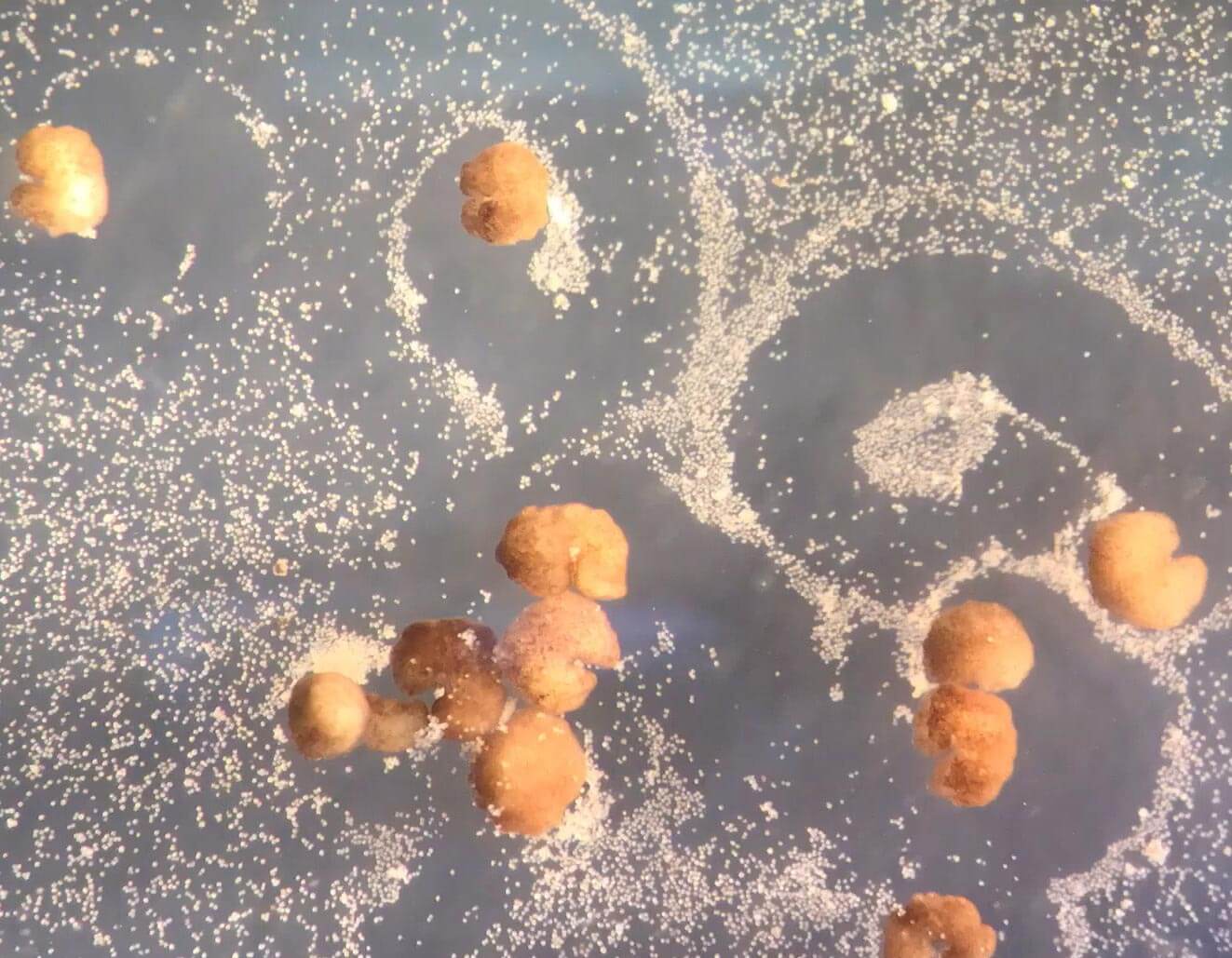Researchers from the University of Vermont succeeded in creating new life forms with the help of artificial intelligence when frog embryos were used as the raw material. A first step in the field of synthetic biology. The researchers call the new creatures "xenobots", meaning external life

What if I told you that we could take a human embryo in the earliest stages of development, disassemble it into all its cells, and then reassemble them in a new and different way - and turn it into a tiny living creature, capable of swimming and even reproducing?
And if all of this isn't enough to raise your eyebrows, here's another point: the researchers who did this, followed the instructions of an artificial intelligence that explained to them how to put the cells back together to get the desired creature.
Creepy, a little? Well, yes. But this is exactly what two research groups that collaborated in the last two years did, with one small difference: not in human embryos, but in frog embryos. And yet, the principle in his eyes stands.
It all started a year ago, when researchers at the University of Vermont used a supercomputer to design biological creatures in a completely new configuration that had never occurred naturally. The scientists re-engineered living cells that came from zebrafish embryos, and assembled them into new life forms. The new organisms, which the researchers named "xeno-bots" (xeno, or xeno, means "external") could move towards a certain goal and heal themselves if they were cut.
"These are new living machines," Joshua Bongard, one of the xenobot developers, said at the time. "They are not a traditional robot or a known species of animal. This is a new type of accessory: a living, programmable organism.”
The way in which the xenobots were designed is strangely reminiscent of the way in which living beings developed on Earth, in an evolutionary process that required hundreds of millions of years. But through a simulation run on the supercomputer, all of this evolution happened over the course of just months. The researchers ran an evolutionary algorithm on the computer, which came up with thousands of possible ideas for the development of new life forms. The scientists defined the final goal for the computer: for example, giving those creatures the ability to move. The computer continued by assembling – disassembling and reassembling – the complex organisms into thousands of new and unique forms. The only limitation set for the supercomputer was the biophysics of individual frog cells, as the researchers knew these were the 'Legos' they would eventually have to use to carry out the computer's plans.
The whole process required about a hundred runs, before the researchers decided that the results - ideas for assembling living organisms from frog cells - were advanced enough to justify their development in the physical world.
Then the real Frankenstein act began.
The researchers - this time from Tufts University and in collaboration with an experienced microsurgeon, collected stem cells from frog embryos. They let the cells grow and multiply, then used tiny forceps to cut the cells out and put them back under the microscope lens, according to patterns designed for them by the computer - which they couldn't even fully understand, with their limited human understanding.
The cells were connected in ways never before seen in nature, but the computer planned well, and they started working together against all expectations. The skin cells joined together to form a stable structure, while the heart muscle cells began to coordinate their contractions to produce forward motion.
The Frankenstein xenobots were able to move efficiently and explore their surroundings for days and even weeks. They were observed moving in circles, while pushing crumbs to the center of the circle - all this spontaneously and collectively. Other xenobots were redesigned and built with a hole in the center - which was supposed to allow them to carry objects in the center of the hole. The hope was that they would be able to send, for example, medical substances to areas of the body where they are needed[1].
All this, as mentioned, happened a year ago. While everyone else was busy with Bibi and Trump, the coronavirus and the NBA, a supercomputer was designing entirely new living things.
But all this was just a prelude to the present. Because now, at the end of 2021, the xenobots have also started to breed on their own.

The same researchers from last year decided to ask the supercomputer to design a new type of organism: one capable of replicating itself. The computer ran another few million years of evolution in just a few months, and proposed a new way to connect the frog's cells together. The microsurgeons toiled, created the new xenobots, and waited.
They didn't have to wait long.
The new xenobots explored their watery surroundings, and didn't waste too much time before starting the job of replicating. They collected individual cells from the solution, connected hundreds of them together and assembled them into xenobot babies. A few days later, those babies turned into complete xenobots that looked just like their parents and could move on their own.
What did the new xenobots do? Collect new cells from the surrounding solution and assemble new copies of themselves. again, and again and again.[2]

"These are frog cells that reproduce in a very different way than how frogs reproduce. There is no animal or plant known to science that reproduces in this way," said Sam Craigman, the lead researcher on the current study.
"We asked the supercomputer at the University of Vermont to figure out how to adjust the shape of the primordial parents, and the AI came up with some strange designs after months of work, including one that looked like Pacman," Craigman said. "It's very unintuitive. It looks very simple, but it's not something a human engineer would think of. Why one tiny here? Why not five? We sent the results... and he built these pacman-shaped xenobots. And then these parents raised children, who raised grandchildren, who raised great-grandchildren, who raised grandchildren-of-grandchildren."[3]
In a way, body splicing technology (as I call it) circumvents the big problem with genetic engineering: the fact that we still struggle to understand the complex genetics of cells. It focuses on the cells themselves as units that we understand how they work, and allows us to create living machines with different and impressive properties. There is a good chance that xenobots of their various types will find their way to the market to perform countless small tasks, before genetically engineered bacteria get a good foothold in industry.
And basically, why settle for small machines? Wouldn't a stronger artificial intelligence be able to design larger creatures - say, the size of a mouse - that would consist of a collection of cells that perform different and strange functions? Will they have a heart wrapped in skin to protect it? Maybe fighting dogs with bone armor as a way to protect themselves from bullets and shrapnel? Maybe cows in the tiny-enfin that consist of one large udder, and their whole function is to give milk incessantly?
bothersome? horrible? exciting? Yes, for everything.
Some will say that this is a gross violation of the laws of nature. But let's face it: the laws of nature have long ceased to apply to us, in a world where we stop viruses with vaccines, or cut umbilical cords with scissors. So yes - we take frog embryos apart into small pieces and then solder them back together in a different way - but these cells have no consciousness of their own. They are just tiny machines that connect together into larger machines without brains or consciousness. I don't see an ethical problem here.
I am more bothered by another question: what misuses can be found for this technology? The artificial intelligence that designed the xenobots will be able to run within a decade on much cheaper computers, and even micro-analysis will be able to be handed over to expert robots. Will it be possible to require the artificial intelligence of the future to develop xenobots that can break down microplastic particles in water? Probably so. walk around our body and clean the arteries? Definitely possible. walk around our body and eat our arteries? No doubt at all.
What will humanity do with the great power that falls into its lap? This is a question that adults in every generation have probably asked about their children, and yet - today's changes are coming faster than ever, and with a greater potential to change the world.
These are things we will have to think about, because make no mistake: the xenobots are already here in the labs, and soon they will appear among us. Maybe they will be bigger - maybe we will even develop living creatures the size of dogs or humans, with strange shapes that will be especially suited to the tasks that are intended for them. Perhaps these will not be xenobots by definition, but organisms that have been genetically engineered for various purposes.
Either way, the era of synthetic biology - the era of living machines - has already arrived.
Now we have to think about our place in that era.
[1] https://scitechdaily.com/first-living-robots-created-by-assembling-living-cells-from-frog-embryos-into-entirely-new-life-forms/
[2] https://www.pnas.org/content/118/49/e2112672118
[3] https://scitechdaily.com/xenobots-scientists-build-the-first-ever-living-robots-that-can-reproduce/
More of the topic in Hayadan:
- The Innovation Authority decided to finance the establishment of the first synthetic biology infrastructure company in Israel
- The discoverers of the connections between chemistry and biology won the 2016 Wolf Prize for Chemistry
- Can we make babies to order, what is synthetic evolution and what will human 2.0 look like?
- A fish robot powered by a rat muscle
- Creating life artificially - within 3 to 10 years
